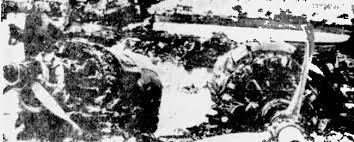Crash of a Douglas C-47-Dl near San Vincente de Caguán: 29 killed
Date & Time:
Mar 22, 1965 at 1455 LT
Registration:
HK-109
Survivors:
No
Schedule:
Bogotá – Bucaramanga
MSN:
4753
YOM:
1942
Flight number:
AV676
Crew on board:
3
Crew fatalities:
Pax on board:
26
Pax fatalities:
Other fatalities:
Total fatalities:
29
Captain / Total hours on type:
268.00
Copilot / Total hours on type:
4941
Aircraft flight hours:
32455
Circumstances:
Flight 676 was a scheduled domestic flight from Eldorado Airport, Bogotá to Bucaramanga. It departed Bogotá at 1358 hours, local time. At 1450 hours it reported over Cimitarra at 9 000 ft in VMC, estimating Bucaramanga at 1510 hours. This was the last communication from the flight. When information of arrival was not received at the airport of destination, a state of alert was declared at 1522 hours and an emergency was subsequently declared at 1540 hours. The wreckage of the aircraft was located on 24 March at an altitude of approximately 7 200 ft on the peak known as Pan de Azucar, 35 NM from Bucaramanga on a magnetic bearing of 45'. The accident occurred at approximately 1455 hours. All 29 occupants have been killed.
Probable cause:
The pilot-in-command continued to fly VFR in unfavourable meteorological conditions which necessitated operation by instrument flight rules.
Final Report:




